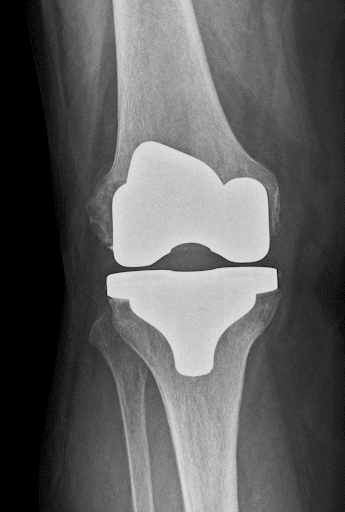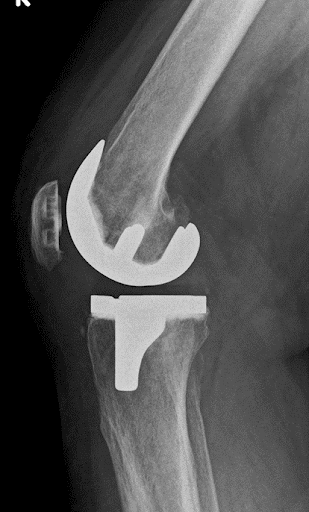What is knee replacement surgery?
Total Knee replacement is the surgical treatment for the knee joint that is affected by arthritis. During the procedure, the damaged cartilage is removed and replaced with metal implants. These are often cemented into the bone. A plastic spacer is then inserted between the metal components to create a smooth surface.
Types of knee replacement treatments
The type of treatment you need will depend on the damage sustained to your knee. There are several different types of treatment available to suit your needs.
- Total Knee Replacement (TKR)
- Partial Knee Replacement
- Avon Patello-Femoral joint Replacement
Further discussion here will focus only on Total Knee Replacement
Total knee replacement surgery
TKR surgery is for people whose knees are severely damaged by arthritis or injury. It is suitable for those that find it difficult to perform simple daily activities like walking or climbing stairs. It is also for those that might be experiencing knee pain when sitting or lying down.
During the procedure, the damaged cartilage is removed and replaced with metal implants. These are often cemented into the bone. A plastic spacer is then inserted between the metal components to create a smooth surface.
Knee replacement surgery alternatives
Total knee replacements are a remarkably successful procedure. However, before operating, other measures are usually tried first. These include rest or reduced activity, pain-relieving medication, anti-inflammatory medication (if no contra-indications), physiotherapy and weight loss. A steroid injection can give temporary relief, while some patients may benefit from minor arthroscopic (keyhole) procedures.
When should I seek treatment for my knee?
For many people, often a knee replacement can provide permanent pain relief in an arthritic knee. These are the usual symptoms of an arthritic knee
- Severe or increasing pain or stiffness
- Long term knee pain with inability to walk
- Knee deformity and loss of function
- Pain at rest and pain at night
- ‘Bowing’ of the leg
- Non-steroidal anti-inflammatory drugs no longer provide relief from pain
Knee replacement – what to expect?
Once a decision has made regarding the knee surgery, you can decide whether you want to get the procedure to be done in the NHS or get it done privately (either via self-pay or through insurance)
Once you want to get the surgery done privately, you will meet your dedicated orthopaedic surgeon and preoperative assessment team who will assess your fitness for surgery. This is your opportunity to ask questions and prepare yourself for the procedure so fire away. Once the clinician has assessed you, a date will be set for surgery.
You’ll be given a spinal anaesthetic, so you’ll be usually awake during the procedure though a mild sedation will be given to ease you into light sleep.
Preparing for knee surgery replacement
Pre-operative assessment:
A pre-operative assessment is our opportunity to ensure that the procedure for which you have been referred is right for you. We will explain your treatment to you and make sure that you are well enough to go ahead with it. It is also your opportunity to meet the orthopaedic surgeon and wider team who will care for you and to ask any questions.
The operation
In osteoarthritis, trauma and inflammatory arthritis, the smooth, low-friction, cartilage that cushions the joint is lost. TKR is essentially a resurfacing procedure where the damaged surfaces are removed, and the thigh bone surface is covered with a smooth metal dome while the shin bone surface is covered with a metal tray. A medical-grade plastic spacer is then fitted which functions as the smooth bearing surface on which the bone glides. The patella (Kneecap) can also be resurfaced with a plastic button if considered necessary.
How long does knee replacement surgery take?
Surgery can take between 60-90 minutes and is usually carried out under spinal anaesthesia. Patients can also have a sedation along with spinal anaesthesia, so they can snooze during the procedure, but recovery is enhanced having avoided a full general anaesthetic.
After knee surgery care – in hospital
Mr. Ellapparadja practices the Enhanced Recovery Pathway (ERP) which is a modern, evidence-based approach that helps to shorten recovery time after major surgery. Length of stay in hospital can be significantly shorter because of ERP, with patients able to return home any time from the day of surgery to 1-2 days post operatively. This is strongly influenced by his learning of this practice during his training in the Golden Jubilee Hospital in Glasgow which was the pioneering hospital of ERP practice in UK (United Kingdom).
you will be strongly encouraged to mobilise within a few hours of surgery with the help of physiotherapists. You can sit in a chair / go to the toilet. This will be helpful to shorten your recovery and decrease the length of your stay at the hospital.
Early mobilisation and a return home reduces the risk of deep vein thrombosis and infections. It can also make patients feel more comfortable. You will be given exercises and instructions on how to use mobility aids such as crutches and sticks.
Front view (AP) of the Knee
Side view (Lateral) of Knee replacement
Recovery at Home
Once you go home, you will need to do the exercises advised by the physiotherapist while taking adequate rest in between the exercises. You will be provided with adequate pain relief before leaving the hospital. It is normal for the knee to be mildly swollen and warm after the surgery. Clip removal will be done by your GP/district practice nurse in 12-14 days and a follow up visit with you consultant will be arranged at 6 weeks. Knee replacement recovery time at home. By 10 to 12 weeks most patients are doing well, though knee replacements often continue to improve for up to 18 months after surgery.


